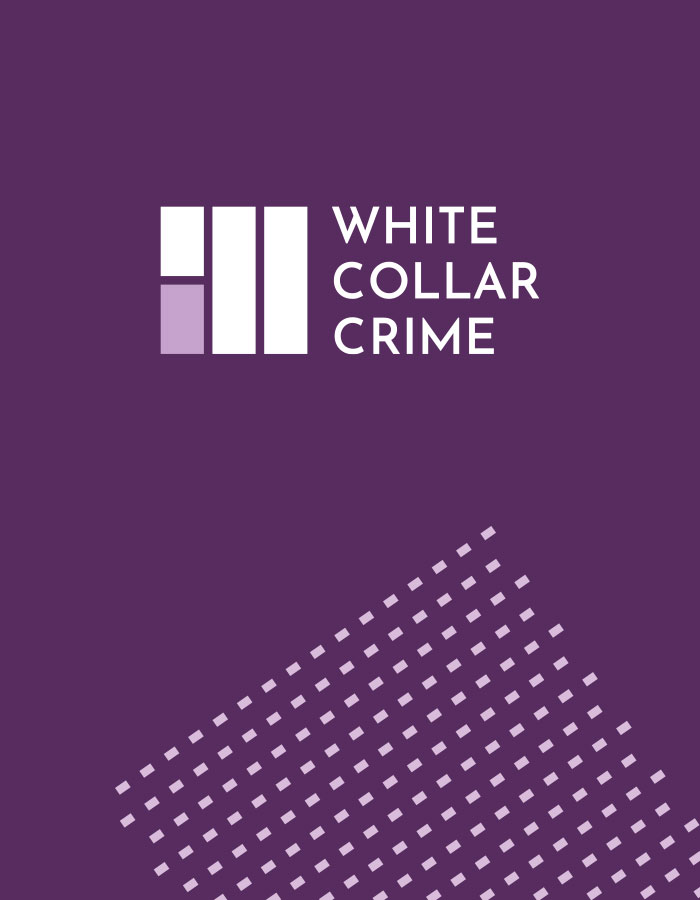Speed read: Anita Clifford examines the changes to the Part 5 civil recovery regime under the Proceeds of Crime Act 2002, focusing on the expanded definition of ‘cash’, the ‘listed asset’ regime and the power to freeze money in bank accounts. Although the provisions are less headline-grabbing than others in the Criminal Finances Act 2017 such as unexplained wealth orders and the new corporate offences, they are likely to have the most impact on practitioners and enforcement authorities day-to-day.
On an initial review of the Criminal Finances Act 2017 (CFA 2017), one could be forgiven for thinking that the high-water mark of the changes are the new unexplained wealth orders and the new corporate offence. Certainly, both developments have grabbed the headlines. Even so, there are several other provisions that have been introduced by the CFA 2017 which are likely to have a much greater impact on the day-to-day work of practitioners and enforcement authorities. The provisions, all of which were entered in to force by 16 April 2018, include the expanded definition of ‘cash’ for the purposes of civil forfeiture in summary proceedings as well as administratively in the absence of judicial oversight, pursuant to Part 5 Proceeds of Crime Act 2002, the introduction of a new regime for the forfeiture of a ‘listed asset’ and the new ability to freeze money held in bank and building society accounts.
The provisions are replicated in principle in the Terrorism Act 2000 (TACT 2000) and the Anti-Terrorism, Crime and Security Act 2001 (ACTSA 2001).
The new provisions signal that civil forfeiture proceedings will be on the rise in the future. Indeed, government guidance issued in January 2018 in respect of HM Revenue & Customs, the Serious Fraud Office, National Crime Agency, Financial Conduct Authority and Crown Prosecution Service, urges that ‘asset recovery and financial investigation should be considered at an early stage in every case, including consideration of the non-conviction based powers of forfeiture, civil recovery and taxation action.’ [1]
Summary forfeiture of cash
Section 14 CFA 2017 amends section 289(6) POCA 2002 to close a loophole in the definition of ‘cash’. The definition is critical to the search, seizure, detention and forfeiture powers in Part 5 POCA 2002.
Previously, where suspected illicit funds had been converted into gambling tokens they could not be seized and summarily forfeited. Now, ‘cash’ includes, alongside cheques, postal orders, notes and coins and banker’s drafts:
- Gaming vouchers, which are vouchers physically issued by a gaming machine representing a right to be paid the amount stated on it
- Fixed-value casino tokens, representing the right to be paid the amount stated on it
- Betting receipts, representing a physical receipt which gives a person the right to be paid the amount stated on it
Notably, the expanded definition of ‘cash’ does not extend to cryptoassets or so-called crypto ‘currency’.
The common feature is the need for any gambling document to state an amount and to represent a right to be paid that amount. As such, documents such as betting slips which do not confer any right to be paid fall outside the scope.
‘Cash’ that has been seized and detained is vulnerable to forfeiture either administratively upon the issuance of a forfeiture notice by the relevant enforcement authority or following successful forfeiture proceedings in the magistrates’ court.
Threshold
The powers may only be used where the financial threshold, £1,000, has been met. [2]
Summary forfeiture of listed assets
A new framework for the forfeiture of certain high-value assets in the magistrates’ court has also been introduced into the Proceeds of Crime Act 2002 to complement the cash forfeiture regime.
Chapter 3A of Part 5 POCA 2002 has been inserted by section 15 CFA 2017, enabling a constable, officer of HM Revenue & Customs, an SFO officer or accredited financial investigator to search for, seize and ultimately seek the detention and forfeiture of certain high-value ‘listed assets’ believed to have been obtained through unlawful conduct or to be intended for use in unlawful conduct. According to the 2017 Home Office Impact Assessment which explains the rationale for the new regime, the following assets have been identified as being particularly susceptible to be used by criminals to store and move value both domestically and across international borders:
- Precious metals (gold, silver or platinum only)
- Precious stones
- Watches
- Artistic works
- Face-value vouchers
- Postage stamps
These are the assets that fall within the category of ‘listed assets’ in new Chapter 3A and therefore, are vulnerable to being seized and eventually forfeited.
There are several procedural safeguards within the new regime which replicate those applicable to the cash seizure regime. For example, exercise of the search and seizure powers is subject to approval first being obtained from a judicial officer (justice of the peace) or, if not practicable, a senior officer: section 303E POCA 2002. Enforcement authorities are guided in the exercise of the new powers over listed assets by a detailed Code of Practice, which was issued pursuant to section 303G POCA 2002 on 16 April 2018. [3] There is also (limited) provision for compensation and for victims of detained property to seek release.
Threshold
The powers, furthermore, are only available where the ‘listed asset’ has a minimum value of £1,000: section 303Y POCA 2002.
No administrative forfeiture
There is, however, one striking difference between the listed asset regime and the cash regime in Part 5 POCA 2002. Administrative forfeiture is not available for ‘listed assets’ whereas it is for seized cash in relation to which a justice of the peace or magistrate has authorised detention. The power of law enforcement to administratively forfeit detained cash pursuant to section 297A POCA 2002 was introduced by section 65 of the Policing and Crime Act 2000 which came in to force in 2014. Whilst forfeiture of property without judicial oversight is a highly draconian feature of any legal system and is vulnerable to criticism, the slight difference in the approach to illicit cash and illicit mobile high-value assets does seem incoherent.
In 2017, the Home Office estimated that the number of ‘listed asset’ forfeiture cases would be 150 – 200 a year. It is projected that, on average, the value of the asset will be between £5,000 to £8,000. [4]
Account freezing and forfeiture
Law enforcement powers are further enhanced by the new ability to freeze and forfeit funds held in bank and building society accounts. Section 16 CFA 2017 introduces new Chapter 3B into Part 5 POCA 2002. Chapter 3B aligns closely with the cash forfeiture provisions and new ‘listed asset’ forfeiture provisions detailed above. The impact of this new power, however, should not be underestimated.
Prior to the CFA 2017, law enforcement was able to obtain bank account monitoring orders and identify suspicious accounts from Suspicious Activity Reports (SARs) submitted by the regulated sector but the route to freezing and ultimately forfeiting money in bank accounts was not straightforward. Freezing and forfeiture depended on the use of either Part 2 POCA 2002 powers (restraint and conviction-based confiscation) or Part 5 POCA 2002 powers (civil recovery).
Use of Part 5 powers presented several challenges. Axiomatically, money held in bank accounts is not ‘cash’. Consequently, the ability to summarily forfeit the funds under Chapter 3 Part 5 POCA 2002 was not open. Further, although de-risking banks voluntarily suspend bank accounts because of suspicious activity, the subsequent recovery of the funds depended on the enforcement authority commencing civil recovery proceedings in the High Court. Quite apart from the time, money and investigative resources required to pursue High Court proceedings, the property in question must meet the £10,000 value threshold. [5]
According to the Home Office in its Impact Assessment of the new bank account freezing and forfeiture provisions, it is estimated that between £30 million and £50 million is sitting in accounts that have been suspended by banks and building societies in the UK. The new power presents a clear route to the recovery of the funds, on satisfaction that they have been obtained through unlawful conduct or are intended for use by any person in unlawful conduct. The power is open to HM Revenue & Customs, police, the National Crime Agency, Serious Fraud Office and accredited financial investigators.
Banks and building societies
As for what is a ‘bank account’ or a ‘building society account’, a bank is defined as an ‘authorised deposit taker’ that has its head office or a branch in the UK: section 303Z7 POCA 2002. The Act is silent on whether the account to be frozen must actually be maintained by a UK branch.
‘Building society’ is as defined in the Building Societies Act 1986. A building society is a society incorporated under that Act for the purpose of making loans secured on residential property and funded substantially by its members which has its principal office in the United Kingdom: section 5 Building Societies Act 1986.
Consistent with the regime for cash and listed asset forfeiture, there is a minimum financial threshold. The account must contain at least £1,000.
Account freezing
Where an enforcement officer, has reasonable grounds for suspecting that money held in a bank or building society account is ‘recoverable’ (obtained through unlawful conduct) or intended for use in unlawful conduct, he or she may apply to the magistrates’ court for an account freezing order. As the court in SOCA v Matthews [2009] EWHC 1544 (Admin) clarified, there is no need to identify a particular offence to satisfy ‘unlawful conduct’ for the purposes of Part 5 POCA 2002 proceedings. The unlawful conduct need not to take place in the UK.
Prior to the making of the application, the applicant must have obtained approval from a senior officer within his or her enforcement authority. The application will be successful where the court is satisfied that there are reasonable grounds for suspecting that all or part of the funds have been obtained through unlawful conduct or are intended for use in unlawful conduct. Once it is made, the order prohibits the making of withdrawals or payments from the account. All persons affected by the order must be given notice of it.
The framework contains provisions for the variation and discharge of the order and replicates the provisions elsewhere in Part 5 POCA 2002 for the exclusion of property for the purposes of reasonable living or business expenses and legal expenses.
Forfeiture
Forfeiture of money held in bank or building society accounts is available two ways:
- Administratively by the enforcement authority on the issuance of an account forfeiture notice
- By order of a magistrates’ court
The provisions are identical to those applicable to cash forfeiture. For the funds to be forfeited, the decision maker must be satisfied on the balance of probabilities that the funds are recoverable property or intended for use in unlawful conduct.
Recent action
In June 2018, in a ground-breaking case, £2.5 million in a bank account believed to be intended for unlawful use was detained by a magistrates’ court in Ipswich.
[1] Guidance issued under section 2A Proceeds of Crime Act 2002, available at: https://assets.publishing.service.gov.uk/government/uploads/system/uploads/attachment_data/file/678293/2018_01_s2A_Guidance.pdf.
[2] Proceeds Of Crime Act 2002 (Recovery of Cash in Summary Proceedings: Minimum Amount) Order 2006, SI 2006/1699.
[3] Home Office, Code of Practice issued under 303G POCA 2002 Recovery of Listed Assets: Search Powers (April 2018)
[4] Home Office, Criminal Finances Act – Overarching Impact Assessment (20 June 2017) https://assets.publishing.service.gov.uk/government/uploads/system/uploads/attachment_data/file/621192/Impact_Assessment_-_CF_Act_Overarching.pdf (accessed 7 June 2018) para 89.
[5] The Proceeds of Crime Act 2002 (Financial Threshold for Civil Recovery) Order 2003.







